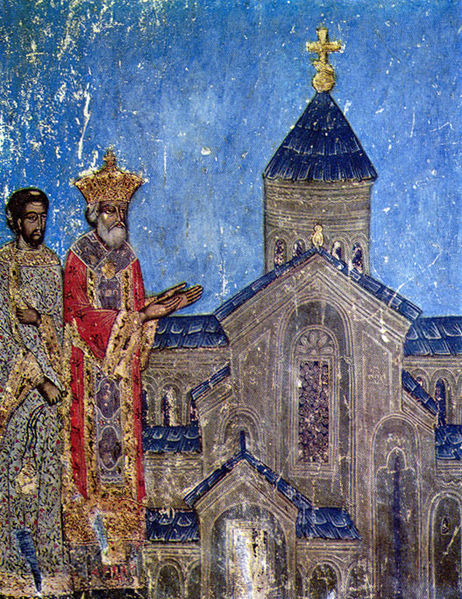History of Georgia (country)
The nation of Georgia was first unified as a kingdom under the Bagrationi dynasty by the King Bagrat III of Georgia in the early 11th century, arising from a number of predecessor states of the ancient kingdoms of Colchis and Iberia. The Kingdom of Georgia flourished during the 10th to 12th centuries under King David IV the Builder and Queen Tamar the Great, and fell to the Mongol invasion by 1243, and after a brief reunion under George V the Brilliant to the Timurid Empire. By 1490, Georgia was fragmented into a number of petty kingdoms and principalities, which throughout the Early Modern period struggled to maintain their autonomy against Ottoman and Iranian domination until Georgia was finally annexed by the Russian Empire in the 19th century. After a brief period of independence as Democratic Republic of Georgia, the country soon ended up being a Soviet republic until the dissolution of the Soviet Union. The current republic of Georgia has been independent since 1991.

Patera depicting Marcus Aurelius uncovered in central Georgia, 2nd century AD
King Mirian III established Christianity in Georgia as the official state religion in 324.
Bedia Cup of King Bagrat III of Georgia, 999 AD
Monastery of Iviron, one of several monastic centers founded abroad by Georgians of the Early Middle Ages.
Bagrat III, of the Georgian Bagrationi dynasty, was a king (mepe) of Abkhazia from 978 on and King of Georgia from 1008 on. He united these two titles by dynastic inheritance and, through conquest and diplomacy, added more lands to his realm, effectively becoming the first king of the Kingdom of Georgia. Before Bagrat was crowned as king, he had also reigned in Kartli as co-ruler with his father Gurgen from 976 to 978.
King Bagrat III, fresco from Bedia Cathedral
Bagrati Cathedral in Kutaisi, a World Heritage Site.
The Bedia Chalice donated by Bagrat to the Bedia Monastery is an important piece of Georgian metal art. c. 999 AD
Bagrat III on the 2014 Georgian postage stamp







